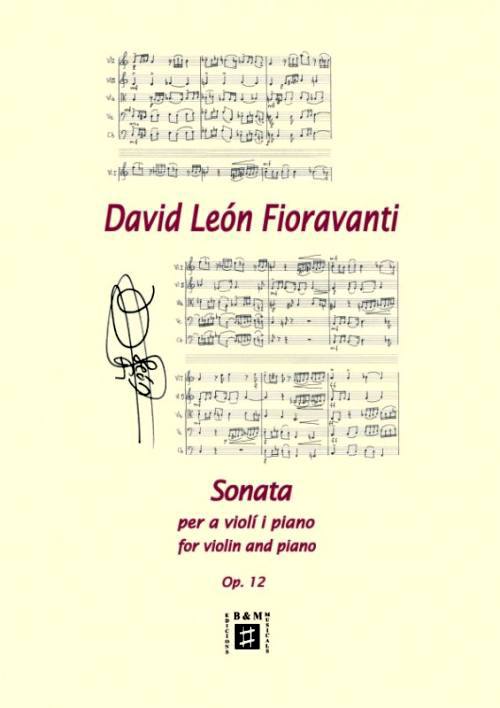Description
Author
Instrumentation
Duration
Pages
Year of composition
ISMN
Ref.
The Sonata for violin and piano Op. 12, was commissioned by my friend and great violin player Mª Antònia Pons-Estel to be performed within the frame of a concerts cycle organised by the Instituto Cervantes and being held at the Salle d’Honeur at Les Invalides in Paris.
The sonata was composed during the months of Septemb er and November 2002. It is divided in three movements:
I Sostenuto. Allegro ruvido
The movement begins with a canon at the octave in three voices, calm and highly expressive and increasing the tension little by little flowing into the allegro in a sonata form and a tough character. In this introduction all the melodic and thematic elements from which derives the greatest part of the whole work are exposed. The first theme in the allegro clearly derives from the melodic turn of the first introductory bars, it is very vigorous. This theme which goes from one instrument to the other develops briefly melting and relaxing into a transition to introduce the second theme a bit quieter and melodic. Elements belonging to the two previous themes appear in the development section treated in a counterpoint manner. In the re-exposition, the order of the themes is inverted.
II Lento. Poco adagio
This movement is written in a re-expositive ternary form treated very freely. It starts with a few mysterious bars with harmonics on the violin and some superposed fifths on the piano. A lyric theme comes forth on the piano passing through to the violin with damper. After a short interjection, dolente, in the score, this theme develops into a calmed dialogue between the two instruments getting to the central section, in a 5/8 beat, melodically derived from the first theme in the previous movement. A brief summary and reminder of the first theme leads to the initial bars marking the end of the movement.
III Allegretto
The last movement is more complex in its structure, apparently, it is a rondó but some variants have been introduced. The first theme, an ostinato, derives melodically from the beginning of the piece but with many rhythmic variations. The second theme of a passionate character shows a great contrast with the first one repeating immediately some bits getting to a climax that remains suspended. A sudden change in the tempo reminds for a moment the dolente character of the II movement. A very agitated section developing the two main themes bursts in, vigorous and full of rhythmic changes. Before the final coda, deriving from the first theme, which marks the brilliant end of the piece, a part of the canon in the beginning is re-exposed.





















There are no reviews yet.